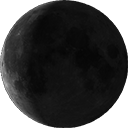
This artist’s impression shows the view from the exoplanet Gliese 667Cd looking towards the planet’s parent star (Gliese 667C). Image released on June 25, 2013.
CREDIT: ESO/M. Kornmesser
The habitable zone of a nearby star is filled to the brim with planets that could support alien life, scientists announced today (June 25).
An international team of scientists found a record-breaking three potentially habitable planets around the star Gliese 667C, a star 22 light-years from Earth that is orbited by at least six planets, and possibly as many as seven, researchers said. The three planet contenders for alien life are in the star’s “habitable zone” — the temperature region around the star where liquid water could exist. Gliese 667C is part of a three-star system, so the planets could see three suns in their daytime skies.
The three potentially rocky planets in Gliese 667C’s habitable zone are known as super-Earths — exoplanets that are less massive than Neptune but more massive than Earth. Their orbits make them possible candidates for hosting life, officials from the European Southern Observatory said in a statement.
via Found! 3 Super-Earth Planets That Could Support Alien Life | Gliese 667C | Space.com.


